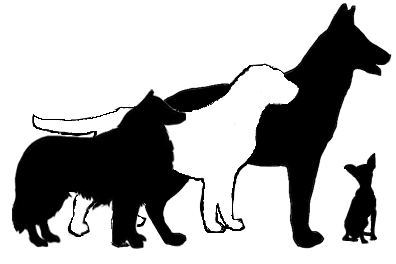
What do a shark fin, carrot tops, and an iceberg have in common?
Underneath that fin is a shark. Under those green frilly tops are carrots. And under that iceberg is a lot more ice. In all three, we are only seeing a small piece of the picture.
The same can be said about a dog’s aggressive behaviors. We are only seeing a small piece of the picture.
When we see a shark fin, instantly we know that there is a shark. We don’t ask ourselves whether there is a shark attached to the fin. If that shark fin should disappear, we don’t think we’re safe. In fact, we may be even more worried, as we know that potential danger lurks beneath the surface. When we see a dog displaying aggressive behaviors, we need to immediately accept that there is a lot more going on than just what we are seeing.
Growling, snarling, snapping, lunging, and biting are very outward, expressive, and frightening aggressive behaviors. Often, we incorrectly assume they are related to dominance. In fact, they are rooted in physiological changes in our dogs (things we can’t easily see) and related emotions of fear, anxiety, arousal, and stress.
Dogs largely communicate through body language. When we fail to understand the signals and take the appropriate actions when they are subtle (examples: head turn, lip licking, stiffening body posture, rapid panting, wide whale eyes, excessive drooling, hard stare), dogs are forced to give us the message in more severe ways (lunging, growling, snarling, snapping, etc.)
When we see aggression, we want to “fix it” quickly, as a dog who bites is a liability to our family, friends, and neighbors. The problem is that if we only address the displays of aggression, the behaviors we see, we are failing to resolve the problem. Remember that just because the shark fin disappears doesn't mean that the shark is gone.

Two critical parts to behavior modification for dogs displaying aggression is understanding a dog’s body language and identifying what is causing the fear, anxiety, stress, and arousal (also known as the triggers). Once we understand these, we create a training plan that addresses the roots of the problem and not just the symptoms.
Let’s take the iceberg as an example. If we chop off the iceberg that we see above water, we are not getting rid of the iceberg. In fact, by getting rid of the visible part of the iceberg, we are making it much more dangerous for ships to pass as they can’t see the threat ahead. When we use tools and methods to suppress a dog’s aggressive behaviors (punishment of those behaviors such as using a prong collar, electric collar, choke chain, alpha rolls, etc.) while it may appear the dog is “cured of aggression”, the reality is that the problem still lurks and the danger of being bitten is arguably greater than before.

Through a combination of counterconditioning, desensitization, and using positive reinforcement to create new alternate behaviors, we can help the dog and his family by building trust and confidence and creating new useful skills. The skills and behaviors are simple ones, yet incredibly powerful. It’s not a matter of complex training. It’s a matter of being a good listener, a good communicator, and an equally ardent dog advocate. When we understand our dog’s body language and we take the appropriate steps, together, we can succeed in reducing and even removing the aggressive displays.
The shark fin alerts us to a threat under the water. The iceberg tells us that there is danger under the surface. Let’s address what’s underneath a dog’s aggressive behaviors and create a new set of roots for our dog to draw upon so that just like the carrots, we can harvest something great: an enjoyable lifelong relationship with our dog.
